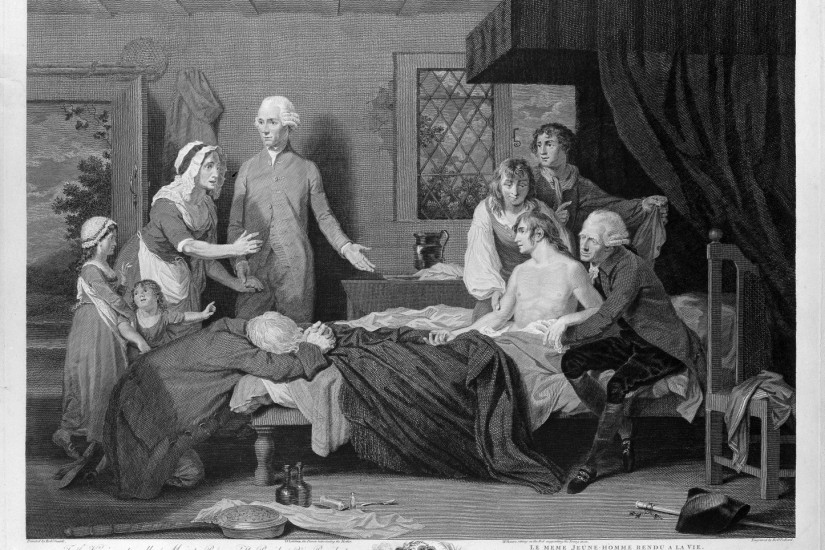The question of who is alive and who is dead is not new, but the answer is one that has changed historically. In the US, one of the biggest shifts came in August 1968, when a committee consisting mostly of doctors, but also a lawyer, a historian, and a theologian, published an article in the Journal of the American Medical Association, acknowledging that the question of who is dead is problematic. “More than medical problems are present. There are moral, ethical, religious, and legal issues.”
By 1968, advances in medical technology had begun to allow patients to receive artificial respiration, which can keep the heart beating even when the brain isn’t functioning; thus, the older definition of death occurring at the cessation of a heartbeat had become unreliable. Despite the new criteria the authors developed over the definition of brain death, or “irreversible coma,” the medical determination of death remains complicated by religious, moral, and ethical debates. In a recent article about the debate, Dr. Michael De Georgia acknowledged that “uncertainties [remain] about the boundaries that divide life and death and the relationship between death of the cells and tissues and death of the human being.”
In the fifty years since the Harvard panel publicized their definition of brain death, specific publicized cases have raised awareness of the complexity of the diagnosis and the difficult real-life decisions family members try to make, with or without input from doctors. In each decade, experts — a Presidential commission or an organization like the American Academy of Neurology — have tried to craft clearer definitions, but the line between life and death remains murky. As in the last five decades, in the late 18th and early 19th centuries, people worried about the difficulty in measuring the line between life and death. Fearful that loved ones would be buried alive, people attached strings and bells to a finger of a person who appeared dead, so that they could detect any movement and commence or continue resuscitation.
There were also societies dedicated to the resuscitation of people who appeared to be dead, for example, the Institution of the Humane Society of the Commonwealth of Massachusetts (Humane Society) founded in 1788 and modeled after the Royal Humane Society of London founded in 1774. The Humane Society’s main purpose was to revive those apparently dead. In Boston and along the coastline, their concern lay first and foremost with the drowned. The London Society’s founders claimed that it had been successful in reviving 790 out of 1300 people “apparently dead from drowning.” The men who brought the Institution to Massachusetts hoped to replicate this effort, restoring loved ones to their friends and family members.
